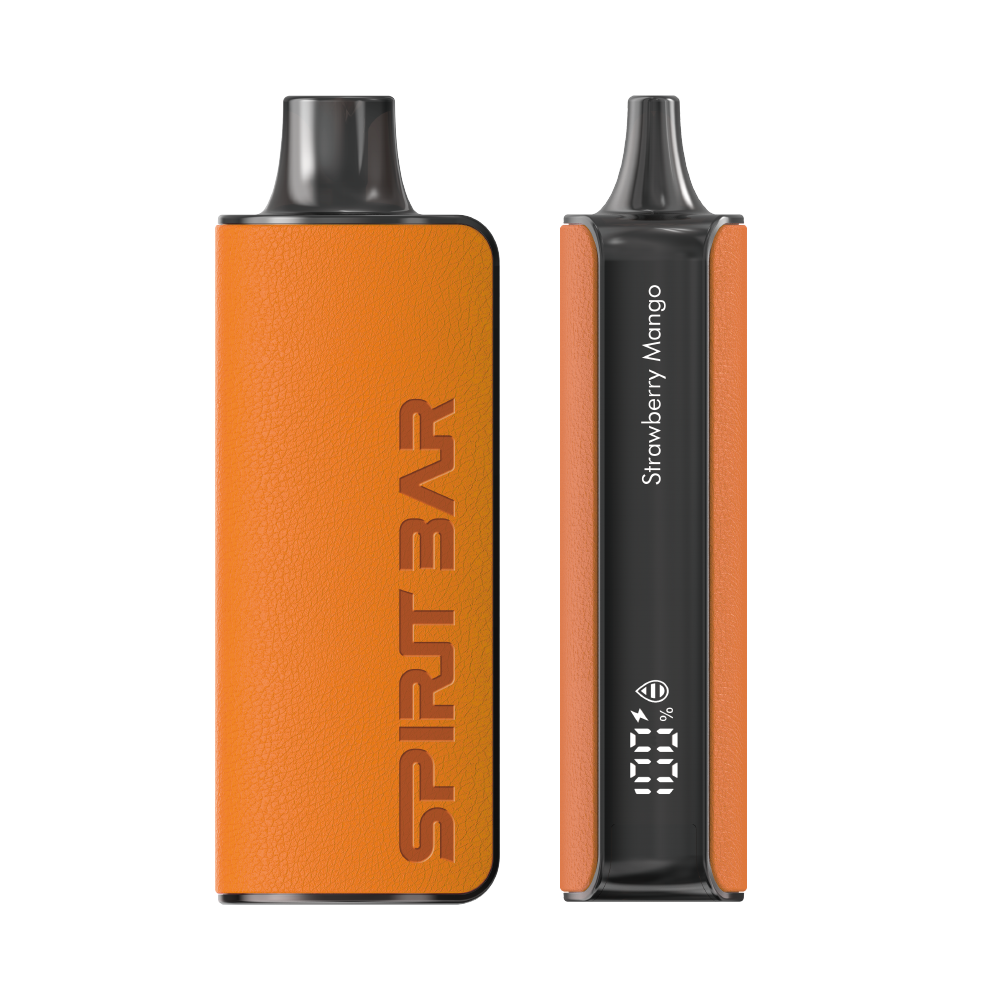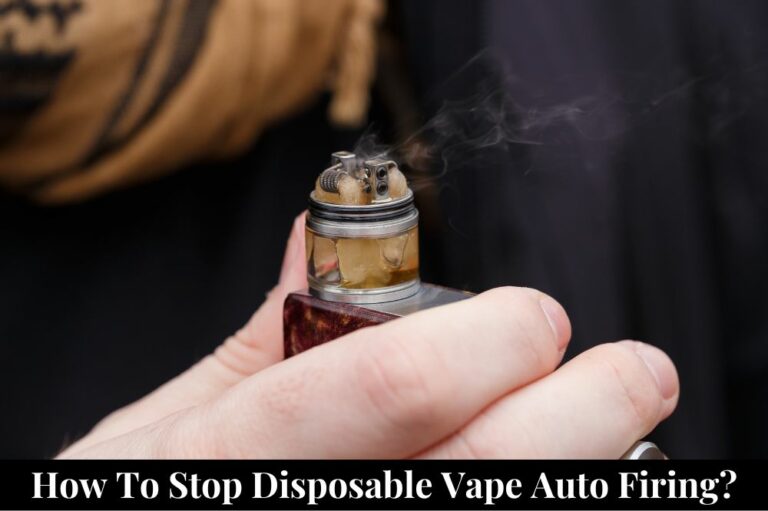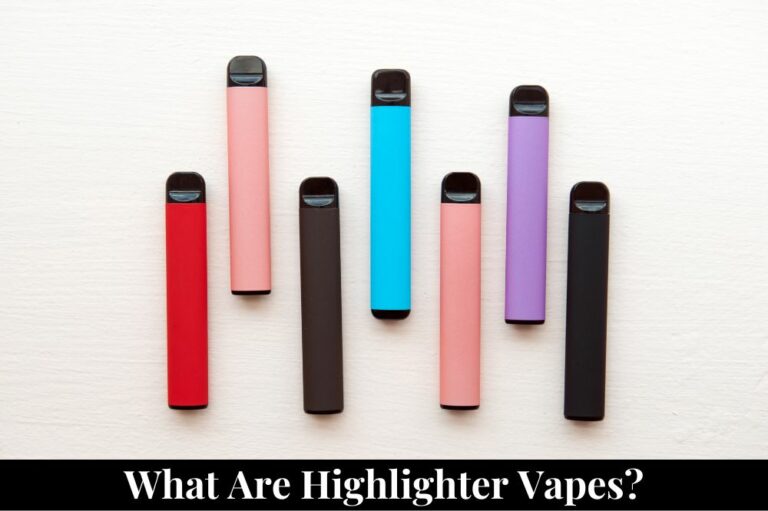
If you’re a vaper, you may be wondering if there is lead in your e-cigarette. The answer is yes, there can be lead in e-cigarettes, along with other toxic metals such as arsenic and nickel. Studies have shown that some e-cigarette heating coils can leak significant amounts of toxic metals, which are then present in the aerosols inhaled by users.
While vaping is often marketed as a safer alternative to smoking, the presence of toxic metals in e-cigarettes raises concerns about potential health risks. In fact, a review of data from 24 studies found that e-cigarette liquids and vapors contain metals and metalloids at levels likely to be harmful to people’s health. People who vape have higher levels of these elements in their blood and other bodily fluids than cigarette and cigar smokers do.
The potential health risks of vaping are still being studied, but it’s clear that e-cigarettes are not risk-free. If you’re a vaper, it’s important to be aware of the potential risks associated with e-cigarettes and to make informed decisions about your health.
What is Vaping?
If you’re curious about vaping, it’s important to understand what it is and how it works. Vaping involves inhaling a vapor produced by an electronic cigarette or other vaping device. The device heats up a liquid, which typically contains nicotine, flavorings, and other chemicals, to create the vapor that you inhale.
Vaping is often marketed as a safer alternative to smoking traditional cigarettes. While it’s true that vaping doesn’t involve burning tobacco, which is a major source of harmful chemicals in cigarettes, it’s still not completely safe. Vaping liquids can contain a variety of chemicals, including some that are known to be harmful.
Some of the chemicals that can be found in vaping liquids include:
- Nicotine: This is the addictive substance found in tobacco products, and it can also be present in vaping liquids.
- Flavorings: Vaping liquids often contain flavorings to make them more appealing. However, some flavorings can be harmful when inhaled.
- Propylene glycol and glycerin: These are common ingredients in vaping liquids, and they help create the vapor that you inhale. While they are generally recognized as safe for consumption, there are concerns about the potential health effects of inhaling them.
- Metals: Some studies have found that vaping devices can release small amounts of metals like lead and nickel into the vapor that you inhale.
It’s important to keep in mind that vaping is still a relatively new phenomenon, and there is much that we don’t know about its long-term health effects. While it may be a less harmful alternative to smoking traditional cigarettes, it’s not completely risk-free. If you’re considering vaping, it’s important to do your research and make an informed decision.
Understanding Lead
Lead is a toxic heavy metal that can cause serious health problems when ingested or inhaled. It is a naturally occurring element that has been used in many industrial applications, including the production of batteries, ammunition, and paint. Lead can also be found in the environment, such as in soil, dust, and water.
SPIRITBAR Katana BP10000
- Slender, leather-textured body reminiscent of a katana handle for an authentic samurai feel
- Unique samurai-inspired e-liquid flavor - fruity yet not too sweet, with a luxurious, elegant aroma
- Powerful 650mAh rechargeable battery for extended vaping time
- Large 18ml e-liquid capacity and 10,000 puff capacity
- Advanced mesh coil and e-liquid & power display screens for optimal vaping experience
The special juice captures the essence of the samurai spirit with its rich, smoothly pulsating flavor that brings new satisfaction with every puff. The device's slender, leather-textured design evokes the grip of a samurai's katana, making this product a perfect choice for beginner vapors.
When lead is inhaled, it can enter the bloodstream and cause damage to various organs, including the brain, kidneys, and reproductive system. Ingesting lead can also lead to similar health problems. Children and pregnant women are especially vulnerable to the harmful effects of lead exposure.
Lead can be found in many products, including some types of vaping devices. Some studies have found that certain e-cigarettes and vape cartridges contain lead and other toxic metals. These metals can be released into the vapor when the device is heated, and then inhaled into the lungs.
It is important to note that not all vaping devices contain lead, and not all e-liquids are created equal. Some manufacturers have taken steps to ensure that their products are free of harmful metals, while others have not. It is important to do your research and choose a reputable brand that has been tested for quality and safety.
To reduce your risk of exposure to lead, it is also important to follow proper vaping techniques. Avoid using devices that produce high levels of heat, as this can increase the likelihood of metal leaching into the vapor. Additionally, be sure to clean your device regularly and replace the coil as needed to prevent the buildup of harmful metals.
Possibility of Lead in Vaping
When it comes to vaping, there is a possibility of lead being present in the vapor. A study found that toxic levels of metals, including lead, were present in e-cigarette vapors. The study found that the metal comes from the heating coils in the vaping device [1].
SPIRITBAR Jack’s Flask 9000 Puffs
- Stylish pirate flask-shaped body providing an exciting vaping experience
- Delivering up to 9000 puffs per device
- 20ml e-liquid capacity with 50mg nicotine strength for satisfying throat hit
- Specialized pirate-themed e-juice flavors for rich, swirling taste
- Premium mesh coil optimizes flavor profile for maximum vaping enjoyment
This disposable vape captures the daring spirit of the high seas with its flask styling and signature pirate e-juice flavors. The extraordinary battery life provides 9000 indulgent puffs for extended vaping pleasure. Live boldly and freely with the Jack's Flask - a legendary vaping experience fit for a pirate's adventures.
It is important to note that not all vaping devices contain lead. However, it is difficult to know which devices do and which do not. The lead content in the vapor can vary depending on the device used, the temperature at which it is heated, and the liquid being vaporized.
It is also important to note that the amount of lead in the vapor is not the only concern. The frequency and duration of vaping can also impact the amount of lead and other toxic metals that are inhaled.
If you are concerned about the possibility of lead in your vaping device, it is recommended that you choose a device from a reputable manufacturer and avoid using devices with heating coils made from unknown materials. Additionally, it is important to follow the manufacturer’s instructions for use and to not modify the device in any way.
While the long-term effects of vaping are still being studied, it is important to be aware of the potential risks associated with vaping, including the possibility of lead exposure.
Factors Contributing to Lead Presence in Vape
If you are a vaper, you might be wondering whether your e-cigarette contains lead. Unfortunately, the answer is yes. Many studies have found that e-cigarettes expose users to toxic metals such as lead and arsenic.
The presence of lead in e-cigarettes is due to several factors. One of the primary contributors is the heating coil. When e-liquid comes into contact with the coil, it can cause the coil to release metal particles, including lead. These particles then mix with the aerosol that is inhaled by the user.
Another factor that contributes to the presence of lead in e-cigarettes is the manufacturing process. Some manufacturers use low-quality materials that can contain lead. Additionally, some e-liquids also contain lead, which can then be released into the aerosol when heated.
Furthermore, the use of certain types of e-cigarettes can also increase the risk of lead exposure. For example, some e-cigarettes that use a high-voltage battery can cause the heating coil to get hotter, which can lead to more metal particles being released.
It is important to note that not all e-cigarettes contain lead, and the amount of lead can vary depending on the brand and type of e-cigarette. However, it is essential to be aware of the potential risks associated with vaping and to take steps to minimize your exposure to toxic metals.
Studies on Lead in Vape
Vaping has become increasingly popular in recent years, but concerns have been raised about the potential health risks associated with the use of e-cigarettes. One of the concerns is the presence of toxic metals, such as lead, in e-cigarette vapor.
Several studies have been conducted to investigate the presence of lead in e-cigarette vapor. A study from Johns Hopkins Bloomberg School of Public Health found that significant amounts of toxic metals, including lead, leak from some e-cigarette heating coils and are present in the aerosols inhaled by users. The study analyzed the aerosols produced by a variety of e-cigarette devices and found that some devices emitted vapors with potentially unsafe levels of lead, chromium, manganese, and/or nickel.
Another study funded by the National Institute of Environmental Health Sciences (NIEHS) focused on exposure to metals from e-cigarettes (EMIT) and found that e-cigarettes expose users to toxic metals such as arsenic, lead, and nickel. The study analyzed the metal content in the e-liquids and aerosols produced by a variety of e-cigarette devices and found that the metal content varied widely between devices.
SPIRITBAR Katana BP10000
- Slender, leather-textured body reminiscent of a katana handle for an authentic samurai feel
- Unique samurai-inspired e-liquid flavor - fruity yet not too sweet, with a luxurious, elegant aroma
- Powerful 650mAh rechargeable battery for extended vaping time
- Large 18ml e-liquid capacity and 10,000 puff capacity
- Advanced mesh coil and e-liquid & power display screens for optimal vaping experience
The special juice captures the essence of the samurai spirit with its rich, smoothly pulsating flavor that brings new satisfaction with every puff. The device's slender, leather-textured design evokes the grip of a samurai's katana, making this product a perfect choice for beginner vapors.
A review of data from 24 studies published in Environmental Health Perspectives found that e-cigarette liquids and vapors contain metals and metalloids at levels likely to be harmful to people’s health. The review also found that people who vape have higher levels of these elements in their blood and other bodily fluids than cigarette and cigar smokers do.
It is important to note that not all e-cigarette devices contain high levels of lead and other toxic metals, and the levels of these metals can vary widely between devices. However, the presence of these metals in e-cigarette vapor is a cause for concern and highlights the need for further research into the potential health risks associated with vaping.
Health Risks Associated with Lead
When it comes to vaping, lead is a serious concern. A study from scientists at Johns Hopkins Bloomberg School of Public Health found that significant amounts of toxic metals, including lead, leak from some e-cigarette heating coils and are present in the aerosols inhaled by users. This means that when you vape, you could be inhaling potentially dangerous levels of lead.
Lead exposure can have serious health consequences, especially for children and pregnant women. According to the American Lung Association, lead exposure can cause damage to the brain and nervous system, as well as problems with growth and development. In adults, lead exposure can cause high blood pressure, joint pain, and fertility problems.
If you are pregnant, it is especially important to avoid exposure to lead. Lead exposure during pregnancy can cause miscarriage, stillbirth, and premature birth. It can also cause developmental delays and learning difficulties in children.
To protect yourself from the health risks associated with lead exposure from vaping, it is important to choose e-cigarettes that are free from lead and other toxic metals. Look for e-cigarettes that have been tested for heavy metals and other contaminants, and that have been certified by a reputable third-party testing organization.
In addition to choosing safe e-cigarettes, it is also important to be aware of the signs and symptoms of lead poisoning. If you experience symptoms such as abdominal pain, headaches, fatigue, or joint pain, seek medical attention right away. Early treatment can help prevent serious health problems associated with lead exposure.
Regulations on Lead in Vaping Products
When it comes to lead in vaping products, the US Food and Drug Administration (FDA) has set limits on the amount of lead that can be present in e-cigarette liquids. According to the FDA, the maximum allowable concentration of lead in e-liquids is 50 parts per billion (ppb). This limit is based on the FDA’s established safe exposure limit for lead.
However, it’s important to note that this limit only applies to e-liquids and not to the hardware used to vape them. The FDA has not set any specific limits on the amount of lead that can be present in vaping hardware, such as coils or cartridges.
In addition to the FDA’s regulations, some states and localities have also implemented their own restrictions on lead in vaping products. For example, California Proposition 65 requires that all products sold in the state that contain lead or other chemicals known to cause cancer or reproductive harm carry a warning label.
Despite these regulations, studies have found that some vaping products may still contain high levels of lead. For example, a study conducted by Medicine Creek Analytics found that some vape cartridges purchased from licensed retailers contained elevated levels of lead and other heavy metals.
To ensure that you are using safe vaping products, it’s important to purchase from reputable retailers and to carefully read labels and product information. If you are concerned about the safety of a particular product, you can also check with the manufacturer or consult with a healthcare professional.
How to Avoid Lead Exposure While Vaping
Vaping has become increasingly popular over the years, and many people have switched from smoking cigarettes to using e-cigarettes. While vaping is generally considered less harmful than smoking, it is important to be aware of the potential risks associated with vaping, including exposure to lead.
Here are some tips to help you avoid lead exposure while vaping:
1. Choose High-Quality Products
When it comes to vaping, it is important to choose high-quality products from reputable manufacturers. Cheap, knock-off products may contain harmful chemicals, including lead, that can be dangerous to your health. Look for products that have been tested and certified by reputable organizations, such as the FDA.
2. Read Labels and Instructions Carefully
Before using any vaping product, be sure to read the label and instructions carefully. This will help you understand how to use the product safely and avoid any potential risks. If you are unsure about how to use a product, ask a knowledgeable salesperson or do some research online.
3. Avoid DIY E-Liquids
While it may be tempting to make your own e-liquids, it is generally not recommended. DIY e-liquids may contain harmful chemicals, including lead, that can be dangerous to your health. Stick to commercially available e-liquids from reputable manufacturers.
4. Clean Your Vaping Device Regularly
Regularly cleaning your vaping device can help reduce the risk of lead exposure. Use a soft cloth or cotton swab to clean the device, and be sure to follow the manufacturer’s instructions for cleaning and maintenance.
5. Be Aware of the Symptoms of Lead Poisoning
If you experience any symptoms of lead poisoning, such as abdominal pain, headaches, or fatigue, seek medical attention immediately. While lead exposure from vaping is rare, it is important to be aware of the potential risks and take appropriate action if necessary.
By following these tips, you can help reduce your risk of lead exposure while vaping. Remember, it is important to use vaping products responsibly and always prioritize your health and safety.
Public Perception on Lead in Vaping
As more information becomes available about the potential risks of vaping, concerns over the presence of lead in vaping products have emerged. The public perception of lead in vaping has been mixed, with some individuals expressing concern while others remain skeptical.
One study found that a significant number of vaping devices emitted vapors with potentially unsafe levels of lead, chromium, manganese, and/or nickel. This has raised concerns about the safety of vaping and the potential long-term effects on respiratory health.
Despite these concerns, some individuals remain positive about vaping and its potential benefits for smoking cessation. However, the controversy surrounding the safety of chronic vaping has led to questions about the validity of claims that vaping is 95% safer than cigarettes.
A recent poll found that the public is divided on the safety of e-cigarettes, with 40% of respondents believing that e-cigarettes are less harmful than traditional cigarettes, while 38% believe they are just as harmful. Additionally, concerns about flavored vaping products being marketed to teens have led to public support for increased regulation of the industry.
Overall, the public perception of lead in vaping remains mixed, with some individuals expressing concern over the potential risks while others remain optimistic about the benefits of vaping. As more research is conducted on the safety of vaping products, it will be important to continue to monitor public perception and adjust regulations accordingly.








